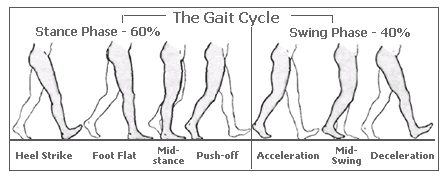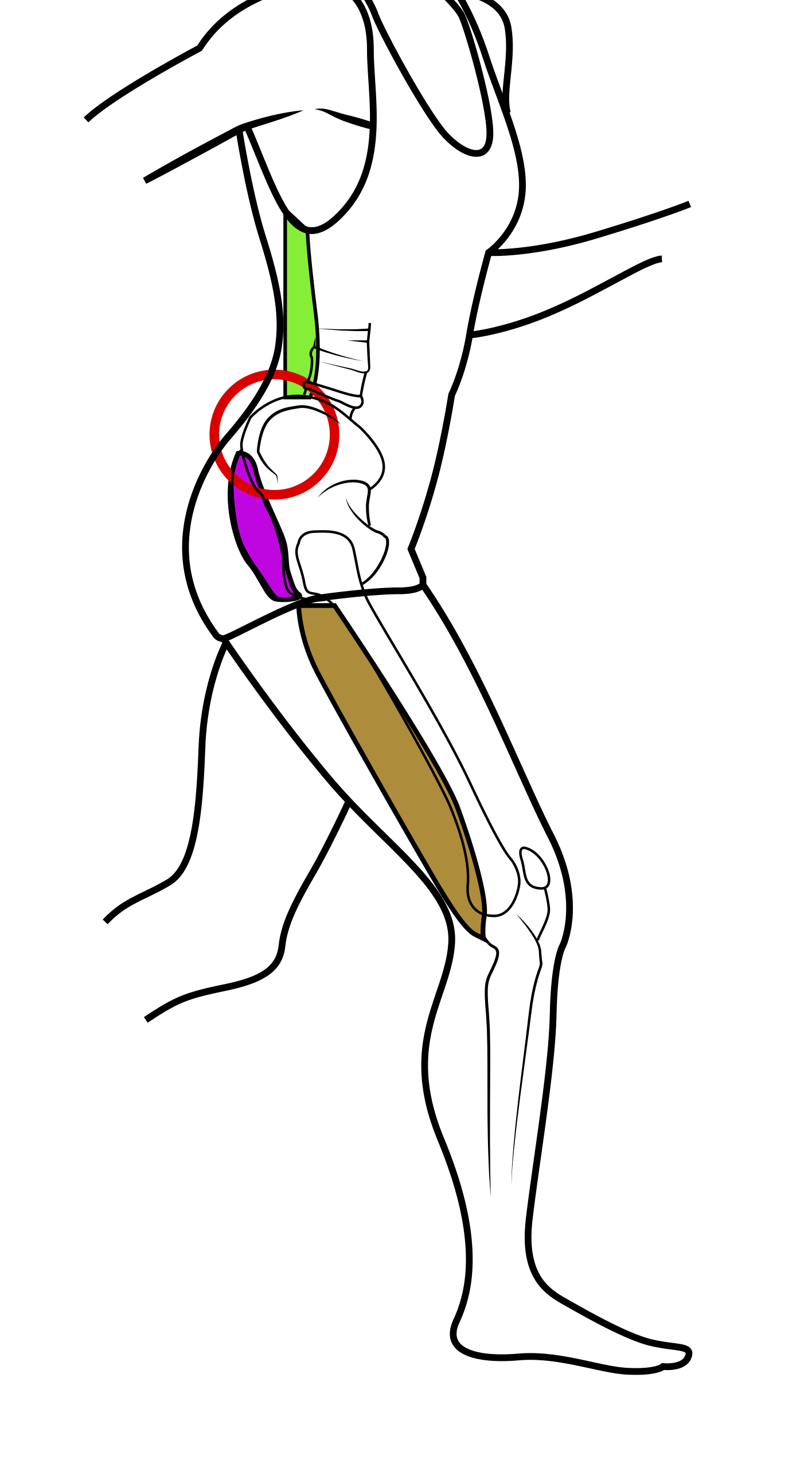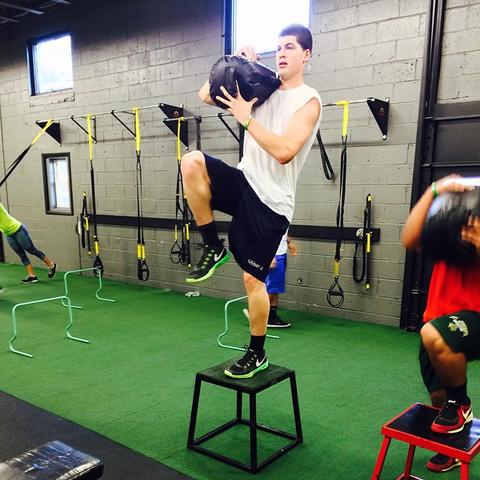The Best Single Leg Exercise You Miss!
2019-02-25
People that think about functional training think about strength a lot differently than those that focus upon bodybuilding. It isn’t you are a “bad” or “good” person depending which side of the fence you sit upon, but you better understand WHY exercise can be SO different depending upon which way you side. A great example is why single leg exercises are such a point of emphasis in functional training and a big after thought in bodybuilding.
Functional training is first and foremost about improving the way the body functions. However, most times, people really don’t know how our body performs every day actions. Don’t believe me? Most fitness professionals can’t tell you how the body creates the complex action of walking. I know, sounds simple, but time and time again I’ve written how walking is one of the most complex actions our body performs, especially considering anything we do in the gym!
Why does that matter about our single leg exercises and our value in them? 60-70% of our time walking is on single leg, now that doesn’t mean we have to jump into, “we need to perform single leg exercises only” discussion. What it DOES mean, is thinking how our body creates stability during such an unstable action.

Something we discuss A LOT in our DVRT education and I’ve written about in our new L.I.F.T. Programs is the chains of the body. While I try to make things relatively simple, the reality is that we do have to take a bit of a deeper dive to appreciate why single leg exercises are so important!
That means discussing a concept you can definitely impress your friends with, that is the Deep Longitudinal System (DLS). What the heck is that obnoxious name? It refers to the chain reaction that happens all the way up our body every time our foot strikes the ground.

What happens every time our body hits the ground? As the National Academy of Sports Medicine explains, “The deep longitudinal subsystem is comprised of the erector spinae, thoracolumbar fascia, sacrotuberous ligament, and bicep femoris. The deep longitudinal subsystem helps to stabilize the body from the ground up. More specifically, it provides force transmission longitudinally from the foot and ankle to the trunk and back down. The dominant role of the deep longitudinal subsystem is to control ground reaction forces during gait motions.”
I realize that many people won’t recognize a lot of these muscles, fascial references, etc. What they are explaining is how force travels up our body and how our body stabilizes our body by using these parts of our body synergistically, not individually.
That’s why people like renowned physical therapist, Gray Cook, says, ““What you say about the hip means nothing if I don’t know the state of the lumbar spine, knee, hip and ankle.” This brings us full circle to why I was saying that single leg exercises are seen completely different by those that understand functional training and those that focus on bodybuilding.
The bodybuilder, heck, sometimes even the powerlifter, will not understand how single leg exercises make you better. They are often labeled as “cute” balance exercises that people that don’t want to lift do. The problem is that they think only in terms of “quads, hams, and glutes” right? They fall for the trap that ONLY these muscles are important, these muscles work individually, and they get the most “worked” by the bigger the number in the lift.

This is one of many studies that I’ve shared over the years that shows that falling into the trap that the “big lifts” work muscles BETTER than “cute” balance exercises. In the past I have used this study to show how much more glute action that more single leg exercises have over the “classics”. However, if we delve deeper we can see that the lunge outdoes the squat on 5 out of the 7 measures of lower body muscle activity (one being really being minimal so almost only one muscle showing much more activity) than the squat.
I bring this up because many times, even the functional training crew, doesn’t think we are going to build muscle or train the body as thoroughly as we do in more the popular lower body exercises.
I’ll admit, some functional training people do some REALLY goofy things and they misuse this information to do some outrageous training. That goes back to the coach though and not the information.
The REAL problem for a lot of people is that they can’t use single leg exercises. They just have too many issues and lose hope and the frustration leads them to dismiss single leg exercises. Enter the solution, step-ups!
No, not the horrible step class step-ups, but real strength building exercise that allows almost everyone to benefit from single leg exercises. Performance of the exercise is key. Sadly, most coaches and lifters make some fatal flaws in the performance of the step-up and lose many of the benefits of this great single leg exercise.

Step Too High
The BIGGEST mistake that most make in the step-up is that the purely grab whatever step is most convenient. That means the step is often FAR too high for the lifter. That causes everything else to go downhill quickly! People lean, cheat, use momentum because they started with the wrong foundation of this single leg exercise.
They Don’t Think About the Feet!
One of the biggest lessons I learned in my career was communication to my clients. A great example is the step-up. Most people don’t cue the step-up anything close to what they do with squats or deadlifts. Considering the stability and strength required we should be AT least as thoughtful.
Most comes to how we use our feet. A good way of knowing how high to use a step is to take away the use of the down foot. A good cue is to “lift the toes up” of the down foot. It makes it almost impossible to push off. Second is to “drive down” with the foot on the step. If when using these cues the person leans forward, knees drop inwards, or any of these, you know the step is too high and the weight you are using may be too much.
Not Connecting the Body
Just like creating tension makes our squat better, the same concepts work for our step-ups. That is why we often use drills like our press outs, even on step-ups, or step down movements. Using load helps us activate the core, so it would be wise to lower the step before not loading the body!
https://www.instagram.com/p/Bi0aiPYBU-C/
Falling Down
It is called a step-up, but this single leg exercise isn’t done until you lower yourself well down to the ground. We could argue that even MORE of the benefit of the step-up is achieved in how we lower ourselves rather than just how we raise ourselves. Being aware of how we are able to lower ourselves also helps us know the height of our step, the position of the load, and the amount of the load.
Wouldn’t it be a cool idea to make our bodies be resilient to injury, work better, AND look great? That is why we are so strong about using these true idea about functional training! Check out these great progressions of the step-up below where we show load and position are two variables we don’t want to overlook!
Want to find out how to make our bodies look and FEEL better? Save 35% on any of our DVRT Restoration programs (Restoration, Pelvic Control, & Shoulder Course) for 35% off for a VERY limited time with coupon code “restore” HERE
© 2025 Ultimate Sandbag Training. Site by Jennifer Web Design.







